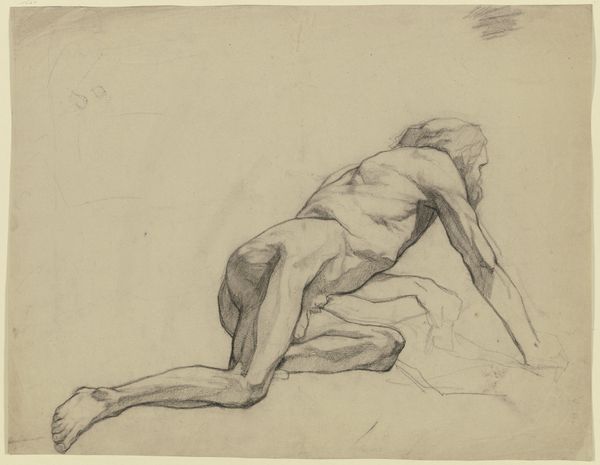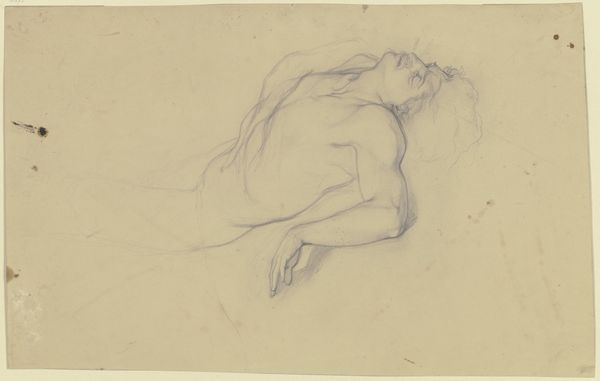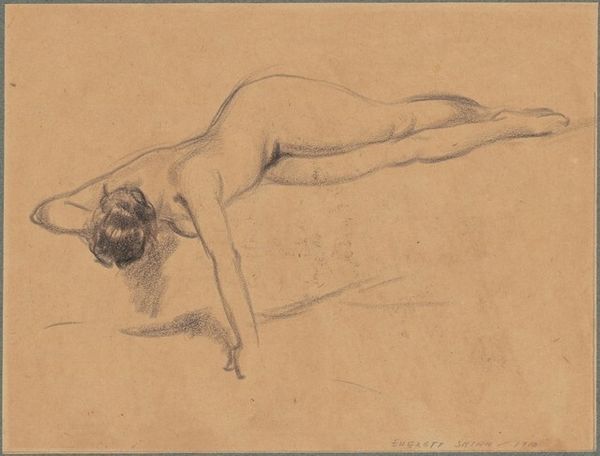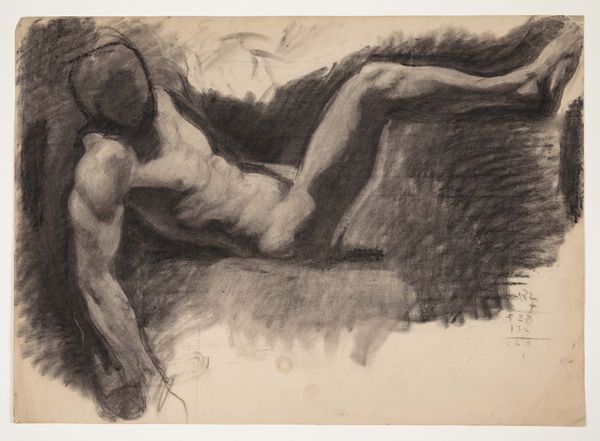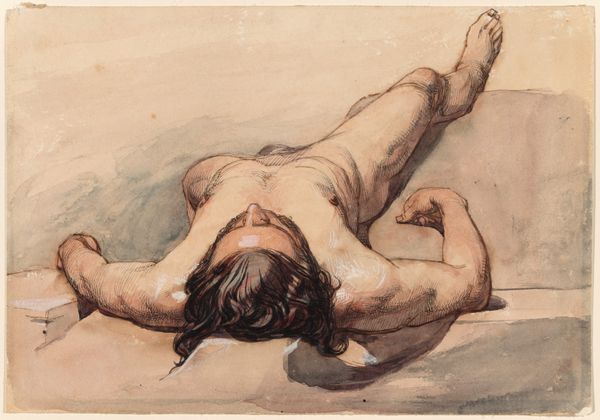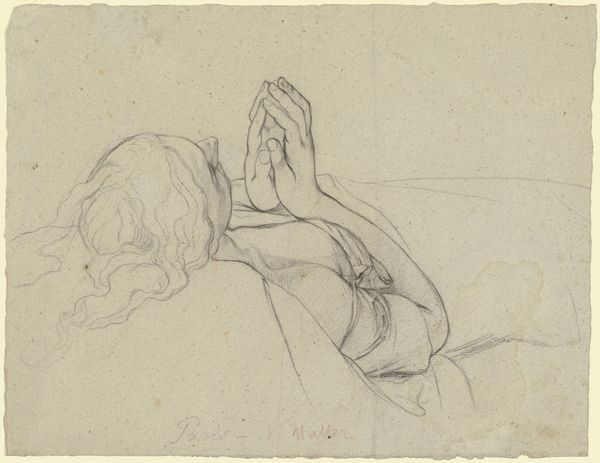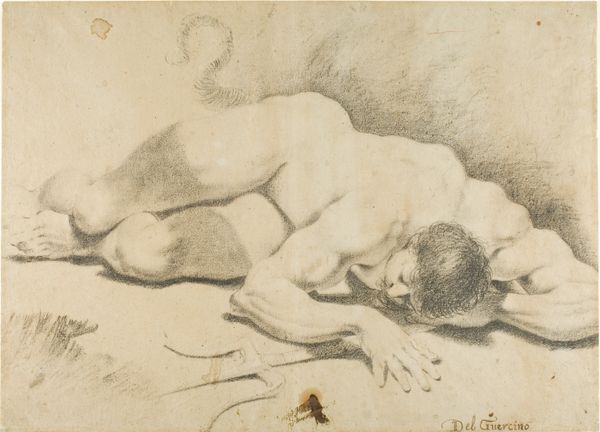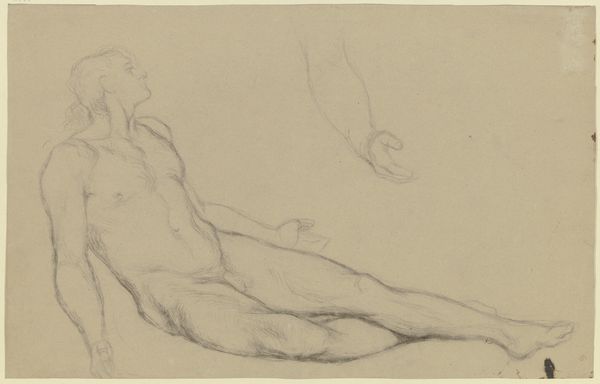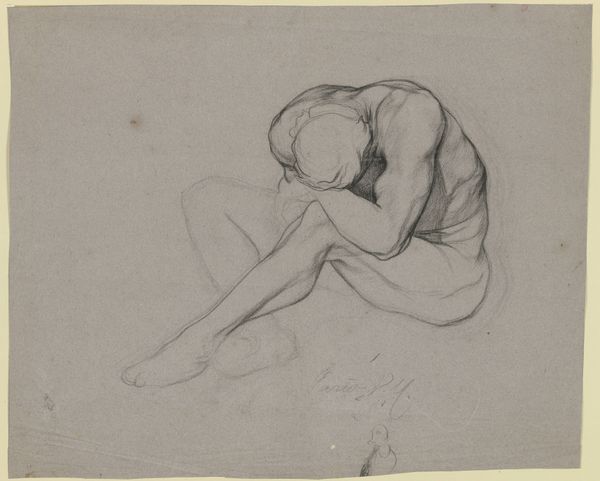
drawing, chalk, charcoal
#
drawing
#
16_19th-century
#
charcoal drawing
#
figuration
#
form
#
pencil drawing
#
chalk
#
line
#
charcoal
#
academic-art
#
nude
#
realism
Copyright: Public Domain
Curator: We're looking at Otto Scholderer's "Reclining Male Nude" here at the Städel Museum, rendered in chalk and charcoal. It's striking, wouldn't you agree? Editor: Absolutely. My initial impression is one of utter exhaustion. The figure is so still, almost defeated in his repose. And the greyscale palette only emphasizes this feeling of melancholy. Curator: Indeed, there's a palpable sense of vulnerability. The way Scholderer uses the charcoal to build depth, especially around the figure's face and torso, draws our attention to the sheer physicality of the body. It is almost hyper realistic but he left sketch marks around him. Editor: You see the realism; I see the labour behind it, though! The material constraints must have been challenging, all that charcoal dust... but also empowering to translate the subject's skin, muscle, bone—into gradations with a material as raw as this. It's grounding. Curator: It makes me think about the male nude in art history. This is definitely removed from the glorification we see in Renaissance sculpture. This man seems very… human, doesn’t he? Less an ideal and more an individual. Editor: Precisely. We can analyze how the paper grain interacts with the chalk, where he chose to smudge or build up layers... Those subtle choices contribute to a portrait of a particular man, someone shaped by gravity, labor. And it's on paper; not marble... more disposable and therefore less "precious." Curator: The pose itself suggests a yielding, a vulnerability that societal standards often discourage, particularly in the portrayal of men. What's particularly intriguing is how Scholderer doesn't shy away from depicting imperfections, shadows...the simple act of capturing light interacting with the human form. Editor: Right, and those materials—chalk, charcoal, paper—democratize artmaking. There's less distance between the artist, his materials, and his subject than with, say, oil on canvas commissioned by a wealthy patron. Curator: I think that accessibility lends itself to an intimacy in the portrayal that echoes the tenderness with which we perceive the drawing. This conversation reminds me that within a single piece there are as many works as we who reflect upon them. Editor: Indeed, and considering all the labour, physical and emotional, compressed into a single artwork lets you see the finished piece not only for its beauty but as a historical document, too.
Comments
No comments
Be the first to comment and join the conversation on the ultimate creative platform.
